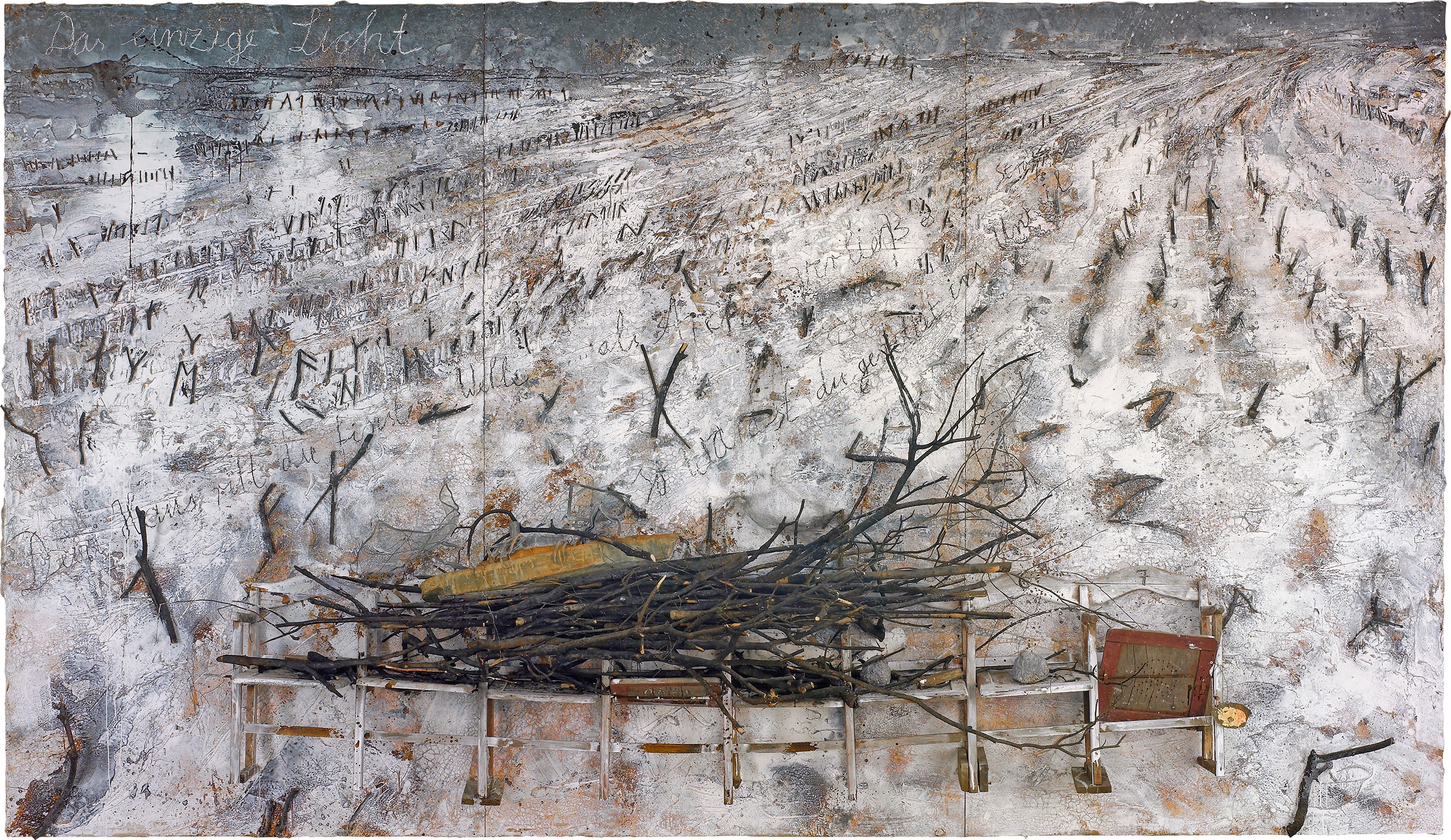



Property of a Distinguished Private Collection
20
Anselm Kiefer
Das einzige Licht
titled ‘Das einzige Licht’ upper left
oil, emulsion, acrylic, charcoal, lead boat, branches, chairs and plaster on canvas, in 3 parts
330 x 570 cm (129 7/8 x 224 3/8 in.)
Executed in 2006.